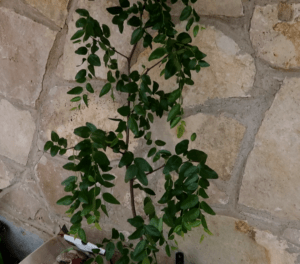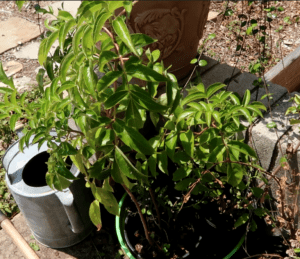Have you ever had a part of your life or house that is just overwhelming and unmanageable? That perfectly describes my side yard. Watch our video to see the steps we are taking to turn this unmanageable space into a beautiful orchard this Fall! See what trees I have already started and how we are going to use a permaculture swale to water them!
Here is a little info about the trees we are putting in so you can see if they would be good for your homestead.

Jujubes are one of the easiest to grow of the fruit crops, with few pests or problems ever reported. Jujube (Ziziphus jujube) was introduced into Texas in approximately 1875. The tree can grow to a height of 30-50 ft if soil and climatic conditions permit. The leaves are dark green and attractive with a shiny waxlike appearance above and a layer of fuzz on the lower side. The tree loses its leaves in the winter to make an ornate specimen with upright trunks, short angled shoots, and rough bark. Link to article: https://aggie-horticulture.tamu.edu/fruit-nut/fact-sheets/jujube/
All about persimmons: https://aggie-horticulture.tamu.edu/fruit-nut/files/2015/04/persimmons_2015.pdf

The elderberry is a very popular plant that grows well in the garden as well as the wild. It is an excellent tree to grow that will attract wildlife to your garden and the flowers and berries can be harvested for a variety of uses. Link to article: https://www.thespruce.com/what-is-elderberry-herb-1762285
The Paw Paw is a true native American fruit tree indigenous to the entire eastern half of America, from Texas to the Great Lakes and down the east coast to Florida. The Paw Paw is rarely seen and hardly known by recent generations, but was a household name for the pre-baby boomer generations. Many old and now forgotten folk songs were sang praising the Paw Paw. Being the largest edible fruit native to America, the Paw Paw is worth singing about and has found some resurgent interest in the past 20 years. Link to Paw Paw at Willis Orchard: https://www.willisorchards.com/category/pawpaw-trees#.W5ckh-hKiUk
Mulberry trees are native to Asia, the middle east, and the eastern half of North America. The trees were widely grown in the 18th and 19th centuries to host silkworms, to supply the lucrative silk trade. There are three primary types of Mulberry: White, Black, and Red. The black Mulberry is considered the best because it is sweeter and less acidic than the others. Mulberries are generally eaten fresh, but also can be made into jelly or syrups for flavoring ice creams, yogurts, or cakes. Link to Mulberry tree at Willis Orchard: https://www.willisorchards.com/category/mulberry-trees#.W5cseOhKiUk
And of course our beautiful plum from Henry! Thank you!
What trees are you dreaming about adding to your homestead this Fall? Scroll down and let me know in the comments. I love hearing from ya’ll!




0 Comments